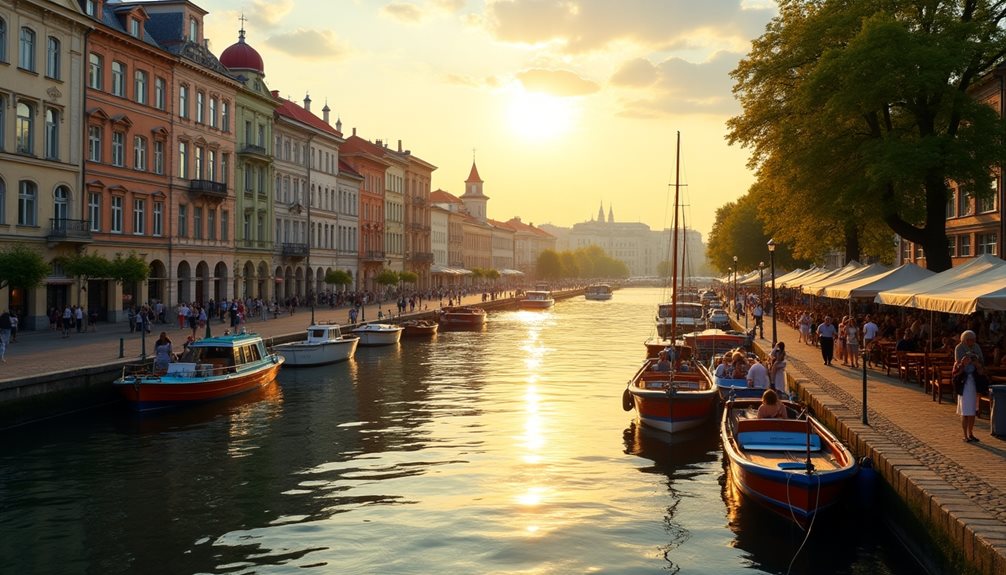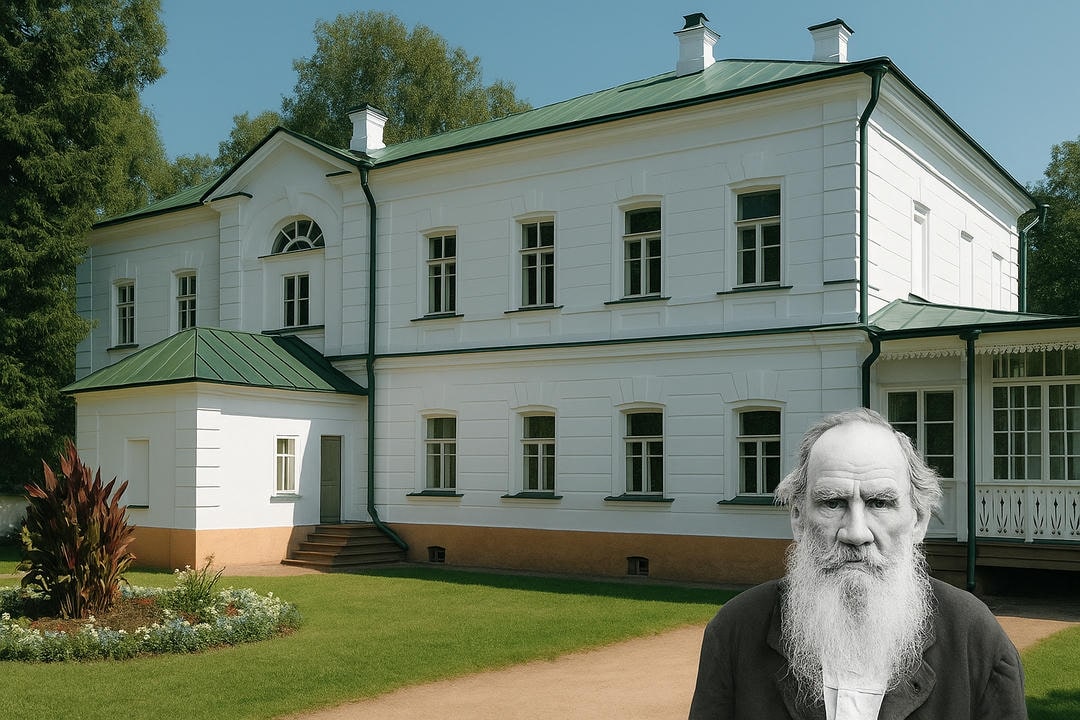Moscow’s Botanical Gardens serve as a critical intersection of ecology and culture. Established for research and conservation, they house over 20,000 plant species, reflecting a commitment to biodiversity. The gardens also feature unique attractions, such as Japanese landscapes and exotic greenhouses. Their role extends beyond aesthetics, raising awareness about sustainable practices in urban settings. Understanding the gardens’ historical significance and ecological contributions offers insight into broader environmental challenges faced today.
Beauty and Ecological Significance

While Moscow’s historical architecture often takes center stage, the city’s botanical gardens are hidden gems that serve as vital ecological and educational resources. These gardens offer a unique blend of aesthetic charm and environmental responsibility, making them a must-visit for locals and tourists alike.
A Sanctuary of Biodiversity
Moscow’s botanical gardens are home to thousands of plant species from diverse climates and ecosystems, showcasing remarkable botanical diversity. Beyond their visual appeal, these gardens play a crucial role in conserving urban biodiversity, providing habitats for numerous organisms, and preserving endangered flora.
Centers of Learning and Research
The botanical gardens facilitate research and education on plant sciences, ecosystem dynamics, and sustainability practices. They empower the public to understand and appreciate ecological principles, encouraging engagement in sustainable practices. Historically, these gardens have been sites of significant scientific research and exploration, contributing to global botanical knowledge.
Cultural and Historical Significance
The botanical gardens in Moscow are more than just collections of flora; they are cultural, historical, and ecological landmarks that reflect the city’s identity and heritage. They preserve Russia’s cultural heritage by showcasing native and exotic species, highlighting the nation’s botanical diversity. These gardens act as essential centers for ecological education, promoting environmental consciousness among visitors.
Russian Academy Botanical Garden
Established in 1945, the Main Botanical Garden of the Russian Academy of Sciences is one of the largest and most extensive botanical gardens in Russia. It serves as a pivotal center for botanical research, facilitating the study of plant taxonomy, ecology, and physiology. With over 20,000 plant species, the garden plays a vital role in local and global plant conservation efforts, contributing significantly to biodiversity and ecological sustainability.
History and Background
Founded in the mid-20th century, the Main Botanical Garden is a product of post-war efforts to advance scientific research and education in the Soviet Union. Its design incorporates various habitats, enabling the exploration of plant adaptations and conservation strategies. As the largest botanical garden in Russia, it promotes biodiversity awareness and fosters a deeper understanding of ecosystem relationships.
Visiting Moscow’s botanical gardens offers an enriching experience that combines the beauty of nature with the importance of environmental stewardship. Whether you’re a nature enthusiast, a scientist, or simply looking for a serene escape within the city, these gardens are a testament to Moscow’s commitment to preserving its natural heritage amidst urban development.
In 1945, the Main Botanical Garden was inaugurated as a tribute to the 220th anniversary of the Russian Academy of Sciences, marking a significant milestone in the institution’s history.
This establishment serves not only as a living repository of plant diversity but also as a hub for scientific research and educational programs. Researchers utilize the garden’s extensive collections for studies on biodiversity, ecology, and conservation.
Additionally, the garden facilitates educational initiatives that promote awareness of environmental issues among the public. Consequently, it embodies a commitment to advancing knowledge and fostering a deeper appreciation for nature within society.
A Legacy of Aristocratic Gardens
The historical ties between Moscow’s Botanical Gardens and aristocratic estates, such as Ostankino, illustrate a intricate relationship between nature, culture, and elite patronage. Ostankino, celebrated for its lavish estate architecture and meticulously crafted aristocratic gardens, embodies the aesthetic ideals of Russia’s nobility. These gardens were more than just leisure spaces; they were symbols of power and culture, shaping the botanical diversity and design of modern gardens.
The influence of these aristocratic estates is evident in Moscow’s Botanical Gardens, which honor the artistic vision of past noble horticultural endeavors while preserving biodiversity. The gardens blend ecological diversity with aesthetic design, showcasing an impressive array of native and exotic plant species that offer a comprehensive understanding of global flora.
Education and Conservation
Educational programs are at the heart of Moscow’s Botanical Gardens, offering workshops and guided tours that foster environmental awareness and appreciation. These initiatives engage the public and contribute to scientific research and conservation efforts, ensuring that the gardens remain a vital resource for both visitors and researchers.
Europe’s Largest Botanical Garden
Spanning 361 hectares, Europe’s largest botanical garden is a hub for research, conservation, and public education. This expansive facility employs sustainable practices to maintain its diverse ecosystems, prioritizing plant conservation and integrating advanced horticultural techniques. The garden’s commitment to education extends beyond its grounds, encouraging community engagement and raising awareness about environmental issues.
A Repository of Global Plant Diversity
Home to over 8,000 plant species, this botanical garden is a significant repository of global plant diversity. Its extensive collection plays a crucial role in plant conservation efforts, safeguarding numerous rare and threatened species. By fostering urban biodiversity, the garden serves as an ecological oasis within the city, promoting sustainable practices and enhancing the local environment.
A Haven for Research and Education
This botanical haven not only contributes to scientific knowledge but also educates visitors on the importance of preserving plant species for future generations. The diverse flora, encompassing both native and exotic species, facilitates research on adaptive strategies and ecosystem resilience, encouraging a deeper appreciation for nature.
Visiting Moscow’s Botanical Gardens offers a unique opportunity to explore the intersection of history, culture, and nature, making it a must-see destination for anyone interested in the rich tapestry of Russia’s botanical heritage.
Key Attractions

Visitors to Moscow’s Botanical Gardens encounter a range of captivating attractions that reflect the institution’s dedication to horticultural diversity and aesthetic excellence.
The Japanese Garden stands as a serene embodiment of Japanese design principles, with tranquil water features and meticulously arranged plantings that inspire a sense of peace. The arboretum showcases an expansive variety of tree species, underscoring the importance of botanical diversity and ecological value. Meanwhile, the rose garden enchants visitors with its vivid blossoms and intricate hybrids, offering a vibrant display of cultivated beauty. Lastly, the greenhouse complex hosts exotic plants from diverse climates, fostering an appreciation for global biodiversity and the delicate interplay within ecosystems.
Historical Significance
Moscow’s Botanical Gardens hold profound historical significance, reflecting the evolution of botanical sciences and the cultural heritage of plant use in Russia. Established against a backdrop of changing societal values, these gardens illustrate the historical context of botanical exploration and education.
Their evolution showcases the shift from utilitarian plant cultivation to an emphasis on conservation and research. The gardens have served as essential centers for scientific inquiry, fostering a deeper understanding of biodiversity.
This dual role as a repository of knowledge and a public space emphasizes their importance in both the scientific community and the broader cultural landscape of Russia.
Founded by Peter I in 1706
Established by Peter I in 1706, the inception of the Botanical Gardens as a medicinal plant nursery marked a pivotal moment in Russia’s botanical history.
This initiative aimed to cultivate and study medicinal plants, thereby advancing the understanding of their therapeutic properties. The historical significance of this endeavor is underscored by its role in fostering scientific inquiry and promoting public health.
By systematically organizing plant species, Peter I laid the groundwork for future botanical research, allowing for an exploration of indigenous flora and its medicinal uses.
Consequently, the gardens became a crucial resource for both scholars and practitioners in the field of medicine.
Survived Historical Events
Surviving a tumultuous history marked by fires and revolutions, the Botanical Gardens have demonstrated remarkable resilience throughout the centuries.
Their ability to endure such upheavals is a reflection of historical resilience and a commitment to cultural preservation. The gardens, often at the center of political strife, have adapted and evolved, maintaining their purpose as a sanctuary for diverse flora.
Restoration efforts following each calamity reflect a broader societal value placed on preserving natural heritage amidst chaos. This intrinsic connection to the past enhances the gardens’ significance, transforming them into living monuments that embody the spirit of survival and continuity in the face of adversity.
Collections
The collections housed within Moscow’s Botanical Gardens represent a rich fabric of biodiversity, meticulously curated to showcase both native and exotic plant species.
These assemblages serve not only as a visual spectacle but also play a critical role in plant conservation efforts. The gardens emphasize the importance of preserving ecological diversity amidst ongoing environmental challenges.
Exotic species, carefully selected for their adaptability, enhance the educational value, providing insights into global flora. Each collection is strategically developed to foster research opportunities and promote sustainable practices, illustrating the intersection of horticulture and conservation within a changing world.
Rare Conifers Planted by Peter I
Among the notable collections in Moscow’s Botanical Gardens, the rare conifers planted by Peter I reflect a significant historical and botanical legacy.
These specimens, introduced during the early 18th century, serve as a testament to Peter I’s vision for botanical diversity and conifer conservation in Russia.
Their historical significance lies in their role as early examples of exotic species cultivated for adaptation to local climates.
The careful documentation and preservation of these conifers highlight the importance of genetic diversity, offering crucial insights into ecological resilience and the ongoing efforts to maintain these unique flora amid changing environmental conditions.
Tropical, Medicinal, and Desert Flora
Medicinal plants, tropical species, orchids, and desert succulents represent a diverse array of botanical specimens housed within Moscow’s Botanical Gardens, each contributing unique ecological and pharmacological value.
The gardens showcase medicinal properties of various flora, emphasizing their potential therapeutic applications. Tropical ecosystems within the gardens support species exhibiting adaptations vital for survival in high-temperature environments.
Orchid conservation efforts focus on preserving these delicate species, which face threats from habitat loss. Additionally, desert succulents illustrate remarkable desert adaptations, showcasing water retention capabilities essential for life in arid conditions.
Collectively, these plants embody the intricate relationships within nature’s fabric.
Unique Features
Moscow’s Botanical Gardens distinguish themselves through a remarkable blend of historical significance and innovative design elements.
The gardens showcase an impressive collection of rare species, meticulously curated to reflect global biodiversity. Notable garden architecture, including glasshouses and themed pavilions, enhances the visitor experience while promoting ecological awareness.
These structures are not merely aesthetic; they function as microclimates, enabling the cultivation of delicate flora that might otherwise struggle in the local climate. This thoughtful integration of nature and architecture creates a dynamic environment, fostering both education and appreciation for plant life, thereby embodying the freedom to explore and connect with the natural world.
Royal Cats as Garden Mascots
Royal cats serve as whimsical yet effective mascots within the landscape of Moscow’s Botanical Gardens, embodying a unique intersection of nature, culture, and folklore.
These feline guardians symbolize royalty and serenity, reflecting the gardens’ historical significance and tranquil environment. The presence of these cats not only enhances the aesthetic appeal but also serves a practical purpose, as they help manage the rodent population, maintaining ecological balance.
Their royal symbolism evokes a sense of majesty and grace, inviting visitors to appreciate the gardens’ beauty. Ultimately, these cats enrich the visitor experience, merging cultural heritage with the natural world.
Visitor Information
Moscow’s Botanical Gardens prioritize accessibility and visitor convenience. Operating hours typically span from 10 AM to 8 PM, with adjustments during public holidays. Admission fees are designed to be inclusive, offering discounts for students and seniors. Clear signage and accessible pathways ensure ease of navigation for individuals with mobility challenges, while online resources provide comprehensive details on seasonal events and guided tours to facilitate planning.
Located on Ulitsa Botanicheskaya, the gardens occupy a strategically significant site that enhances accessibility and reinforces their role in botanical conservation and urban ecology. As a living laboratory, the gardens contribute vital ecosystem services, support biodiversity amidst urbanization, and collaborate with local educational institutions to promote ecological awareness. This integration into Moscow’s vibrant landscape underscores their commitment to preserving plant life while engaging the community in sustainability efforts.
Closest Metro Stations: Vladykino and VDNKh
Access to Moscow’s Botanical Gardens is facilitated by its proximity to two major metro stations: Vladykino and VDNKh.
Vladykino access provides a direct route for visitors, enhancing their journey with efficient transit connections. This station serves as a gateway to the surrounding area, allowing for quick access to the gardens.
In contrast, VDNKh attractions draw numerous tourists, making it a bustling hub. Visitors can easily navigate from VDNKh, where exhibitions and cultural sites abound, further enriching the botanical experience.
Together, these stations guarantee that the gardens remain accessible and appealing to both locals and tourists seeking natural beauty.
The Botanical Gardens occupy a prime location within the urban landscape of Moscow, facilitating easy access for both locals and tourists.
This strategic positioning enhances its status as one of the key Moscow attractions, drawing visitors seeking tranquility amidst the city’s hustle. The proximity to major transport links further encourages attendance for botanical tours, enriching public engagement with diverse flora.
The gardens’ layout is meticulously arranged, allowing for an immersive experience that reflects ecological diversity while promoting educational opportunities. Consequently, the location serves not only as a recreational space but also as a hub for botanical knowledge.




